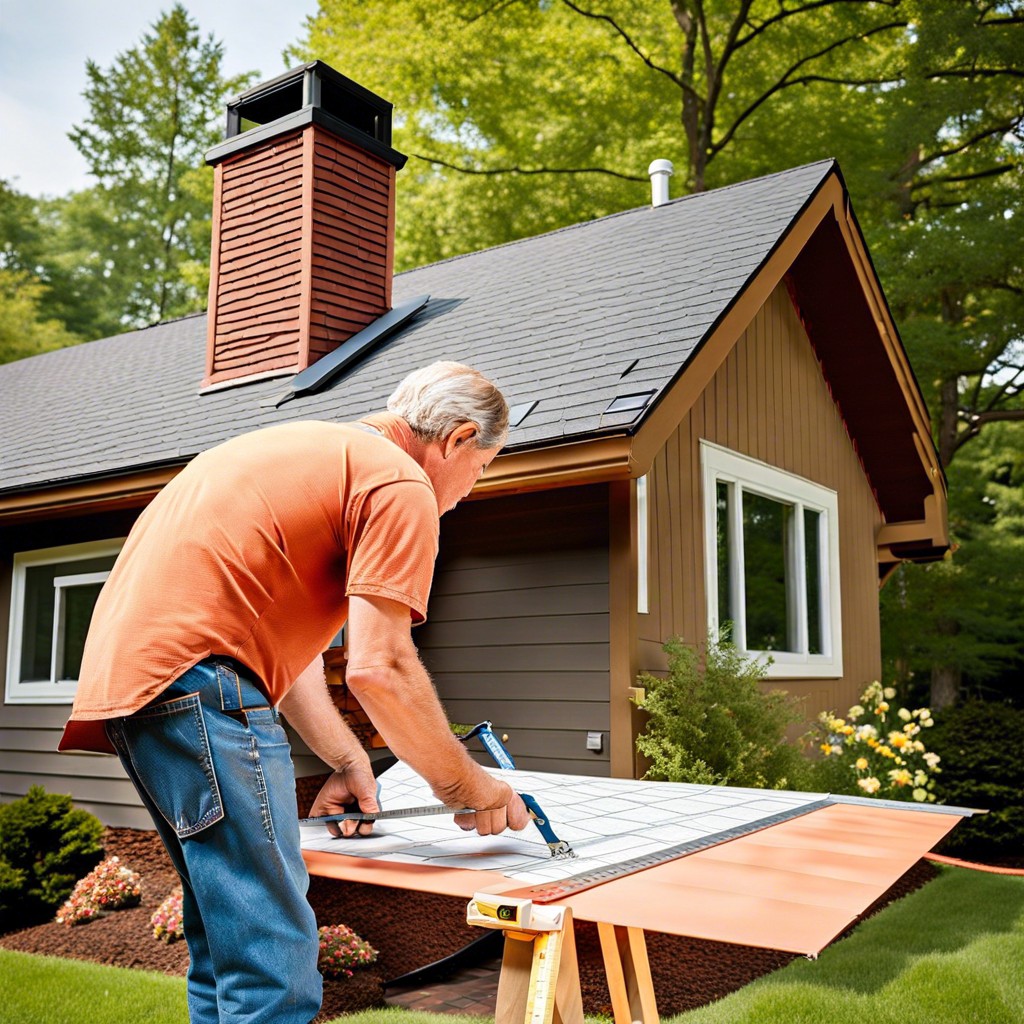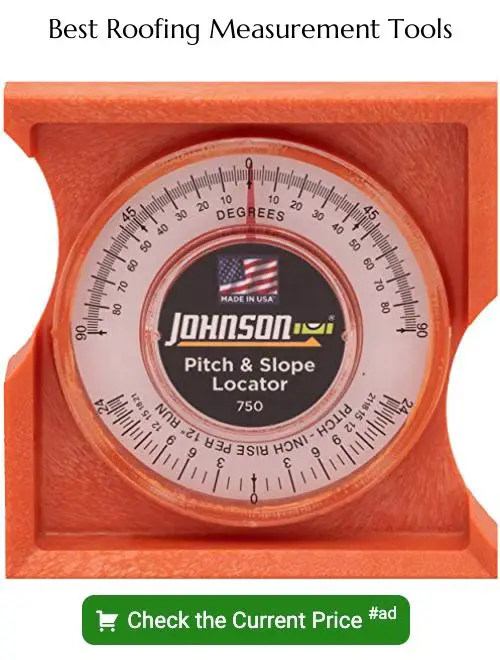Last updated on
Learning to accurately calculate roof square footage is a vital skill, and this step-by-step guide simplifies the process into manageable tasks for any homeowner.
Key takeaways:
- Break down the roof into individual planes
- Measure length and width of each plane
- Multiply measurements to determine square footage of each plane
- Consider slope and complexity of the roof
- Use the square footage to calculate materials needed
How to Measure Your Roof’s Square Footage

Measuring a roof’s square footage starts with the basics: length and width. For a simple gable roof, you would measure the length and width of each plane, or flat section, from the ground or by using the attic space if accessible. Use a tape measure if doing it manually, or opt for technology like satellite imagery or drones for difficult-to-access roofs.
Take these steps for precision:
- 1. Break down the roof into its individual planes.
- 2. Measure the length and width of each plane.
- 3. Multiply these numbers to determine the square footage for each plane.
Remember, always multiply the length by the width for each plane separately. Sum these numbers together to get the total square footage of the roof. Be cautious if walking on the roof; safety should always come first.
Keep the Slope and Complexity of Your Roof in Mind
When determining square footage, accurately evaluate the pitch, also known as the slope of the roof. Pitch influences the actual area as it’s not merely the flat projection but the surface area. To calculate pitch, measure a 12-inch horizontal section from the peak outward; the vertical distance from this 12-inch mark to the roof will give the slope. For example, if the vertical measure is 6 inches, you have a 6-in-12 pitch.
Roof complexity adds another layer. Simple gable roofs are straightforward, but hips, valleys, dormers, and multiple facets create complexity. Gather measurements for each plane separately – a plane being each flat or sloped surface. Record the length and width of each and multiply to get their area before summing them up.
Key points to remember include:
- Measure the length and width of each roof plane.
- Use the pitch factor to adjust the area for the slope.
- Account for each distinct area separately if the roof has multiple levels or features.
By keeping these considerations in mind, you provide a strong foundation for an accurate square footage calculation, setting the stage for precise material estimates and planning.
Calculate the Square Footage of Your Roof
Begin by sketching a diagram of your roof, labeling each plane. For standard gable or hip roofs, think of each plane as a separate rectangle.
Measure the length and width of each plane in feet, either directly with a tape measure or using tools such as satellite measurements provided by various online roofing calculators.
Multiply the length by the width to determine the square footage of each plane. For example, a plane that is 10 feet wide and 15 feet long will be 150 square feet.
If your roof has more complex shapes, like trapezoids or triangles, the same principle applies: calculate the area for each shape.
For a triangle, multiply the base by the height and divide by two. For a trapezoid, add the length of the two parallel sides, divide by two to get the average length, then multiply by the height.
Combine the square footage of each plane to reach the total square footage of the roof. Remember to account for additional features such as dormers, and subtract areas not covered like skylights.
Use these figures to calculate material needs or for communicating with roofing professionals. Always round up to account for waste and ensure full coverage.
How to Calculate the Number of Roofing Shingles Needed
After establishing the square footage of your roof, it’s time to determine the number of shingles required for your roofing project. To do so, you must understand that shingles are typically sold by the ‘bundle’ and ‘square’:
1. A ‘bundle’ of shingles covers roughly 33.3 square feet of roof.
2. A ‘square’ of shingles is a unit that covers 100 square feet.
To calculate the number of shingles needed:
1. Divide the total square footage of your roof by 100 to find out how many squares you’ll need.
2. Check the coverage of the shingle brand you’ve selected, as it can vary slightly.
3. Purchase slightly more than calculated to account for waste and the need for starter shingles along the eaves; industry standards suggest adding an extra 10-15% for waste.
4. Consider the complexity of your roof—valleys, hips, and ridges may require additional shingles.
By following these points, you will be able to purchase an accurate amount of shingles, ensuring efficiency in both material cost and labor.
Factors Affecting Roof Replacement Costs
Material choice plays a pivotal role in determining the cost of a roof replacement. Asphalt shingles are often the most economical, whereas materials like slate or metal can significantly increase the expense.
Labor costs vary by location and the roofing company’s expertise. The bigger or more complex a roof, the higher the labor costs due to the increased time and effort required. The roof’s pitch also influences pricing; steeper roofs pose greater challenges and risks, resulting in higher labor and insurance costs.
Additionally, removing the old roofing materials may entail additional fees, particularly if there is a need to dispose of them properly. Lastly, local building codes and the necessity for permits can impact the overall cost, as compliance with regulations may require specific materials or additional work.
FAQ
What is the formula for calculating a roof?
The formula for calculating a roof area is achieved by multiplying the roof length by the roof slope height and then doubling the resultant figure.
How many square feet is a roof on a 2000 square foot house?
The roof of a 2000 square foot house is typically around 3000 square feet.
What is the formula for estimate of roofing?
The formula for estimating roofing is calculated by measuring the length and width of each plane on the roof including dormers, multiplying these measurements to get the square footage of each plane, and adding up the square footage of all planes to obtain the total roof square footage.
Is roof square footage same as house?
No, the square footage of a roof is not the same as the square footage of a house.
How does the roof pitch factor into calculating roof square footage?
The roof pitch is factored into calculating roof square footage by multiplying the footprint area by the appropriate pitch factor.
What is the difference between roof square footage and total living area?
Roof square footage refers to the total surface area that needs to be covered by roofing materials, while total living area denotes the total usable or livable space within the boundaries of the home’s exterior walls, excluding the garage and any outdoor spaces.
How are dormers and eaves accounted for in roof square footage calculations?
Dormers and eaves are accounted for in roof square footage calculations by measuring and adding their individual areas to the main roof’s area.





